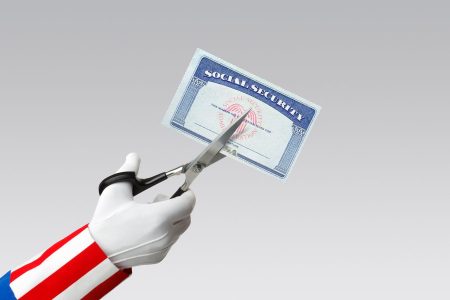Travel rewards are complicated.
Nearly a quarter of travelers (24%) say they have difficulty understanding earning and redemption rules, according to a 2022 survey of 2,041 U.S. consumers by iSeatz, a loyalty program service provider. Yet this complexity makes travel rewards a prime target for spreadsheet-wielding obsessives who want to wring every penny from their points and miles.
These experts love to share lavish vacations on social media and online forums, nitpicking over the best overwater bungalow in the Maldives. They rarely share the more mundane expertise they’ve garnered, even though these basic tactics are the most important, especially for beginners.
Understanding and avoiding these four simple mistakes can help you make smart travel rewards decisions, whether you’re visiting the Maldives or Milwaukee.
Also see: Air travel may reach a breaking point this summer, with more storms, fewer staff and busier skies
1. Accruing credit card debt
This mistake is so critical, it should probably also be Nos. 2, 3 and 4 on this list. Travel credit cards are a great way to earn points and miles and accrue other benefits, but credit card debt — even in relatively small amounts — will quickly erase the value of these perks.
That’s why travel rewards experts never carry credit card debt from month to month if they can avoid it.
Americans currently hold nearly a trillion dollars in credit card debt, according to the Federal Reserve Bank of New York. And delinquency rates, which dropped early in the pandemic, are on the rise. Despite this, Americans are spending more and more on travel, with credit and debit card spending on travel categories in 2022 exceeding 2019 levels, according to a May report from Bank of America.
In short: Many Americans are spending money they might not have on travel and accruing more credit card debt. That’s a big no-no from a travel rewards perspective.
2. Buying points and miles
Have you ever received an email from an airline with a subject line similar to “Purchase miles for 50% off for a limited time”? These promotions might sound like a good deal — who doesn’t want to save that much? Yet they rarely are. In fact, experts rarely buy points and miles directly.
Why? These rewards are essentially a currency managed by the companies who offer them. So exchanging one form of currency, such as U.S. dollars, for another, such as Delta SkyMiles, severely limits the range of goods and services you can purchase. It also puts the future value of these currencies in the hands of the airlines, hotels or credit cards that manage them.
For example, Marriott
MAR,
Bonvoy points have dropped in value from nearly 1.2 cents apiece in 2019 to 0.7 cent in 2022, a 42% decrease, according to an analysis by NerdWallet. And while dollars may lose their value over time, as we’re all now keenly aware, they’re less prone to major fluctuations.
There are situations — such as purchasing a few miles to achieve a specific redemption — when buying points or miles might make sense. But in general, you can ignore those flashy promotions.
Related: 4 ways I use credit cards to make my family’s travel cheaper
3. Always redeeming credit card points through travel portals
Most general travel credit cards (not co-branded cards such as those associated with specific airlines or hotels) offer points that can be used two ways:
- Redeeming points directly by booking through the credit card’s travel portal.
- Transferring points to partner programs.
Many beginners tend to choose the first option. It’s the simplest — all you do is search and book travel through the portal, as you would a cash fare. And it offers consistent per-point value.
Yet rewards obsessives know that the best value often comes from the second option — transferring points to specific programs and booking award travel through them.
For example, World of Hyatt
H,
points are worth 2.8 cents each, according to the latest NerdWallet analysis. That’s far more than the 1 to 1.5 cents many credit card programs offer when booking travel directly.
If you can transfer your points to a high-value program such as Hyatt, you can stretch your credit card points much further. Of course, you should do so only if booking award travel through one of these programs fits into your travel plans.
Also see: Go here, not there: 6 charming summer destinations off the beaten path
4. Paying unnecessary annual fees
We all know the drag of paying for monthly subscriptions we aren’t using, whether it’s Paramount+ or that Pilates membership. Yet, because credit card fees are billed annually, it can be easier to forget about them.
Ignoring annual fees for cards you aren’t using can add up quickly, especially for premium cards that can carry fees north of $400. So ruthlessly pruning cards that aren’t pulling their weight is an important practice among travel rewards experts.
Keep in mind: Canceling a card outright isn’t always the best move, as it can lower your credit score. Consider asking for a retention offer, such as additional points or miles, to make the card’s fee more digestible, or switch to a no-fee card.
Plus: Is the rewards revolution over? Wine, fitness and other niche rewards cards have become casualties along with crypto cards.
Keep it simple
It’s easy to get overwhelmed by the complexity of travel rewards programs and by the experts who share extravagant redemptions on blog posts and TikTok videos. Yet for most travelers, most of the time, sticking with the basics is key.
Don’t accrue debt, buy miles or pay for cards you aren’t using. And consider transferring credit card points to partners rather than using them directly.
That’s it. You’re on your way to a spreadsheet-wielding points and miles obsession.
More From NerdWallet
Sam Kemmis writes for NerdWallet. Email: skemmis@nerdwallet.com. Twitter: @samsambutdif.
Read the full article here















